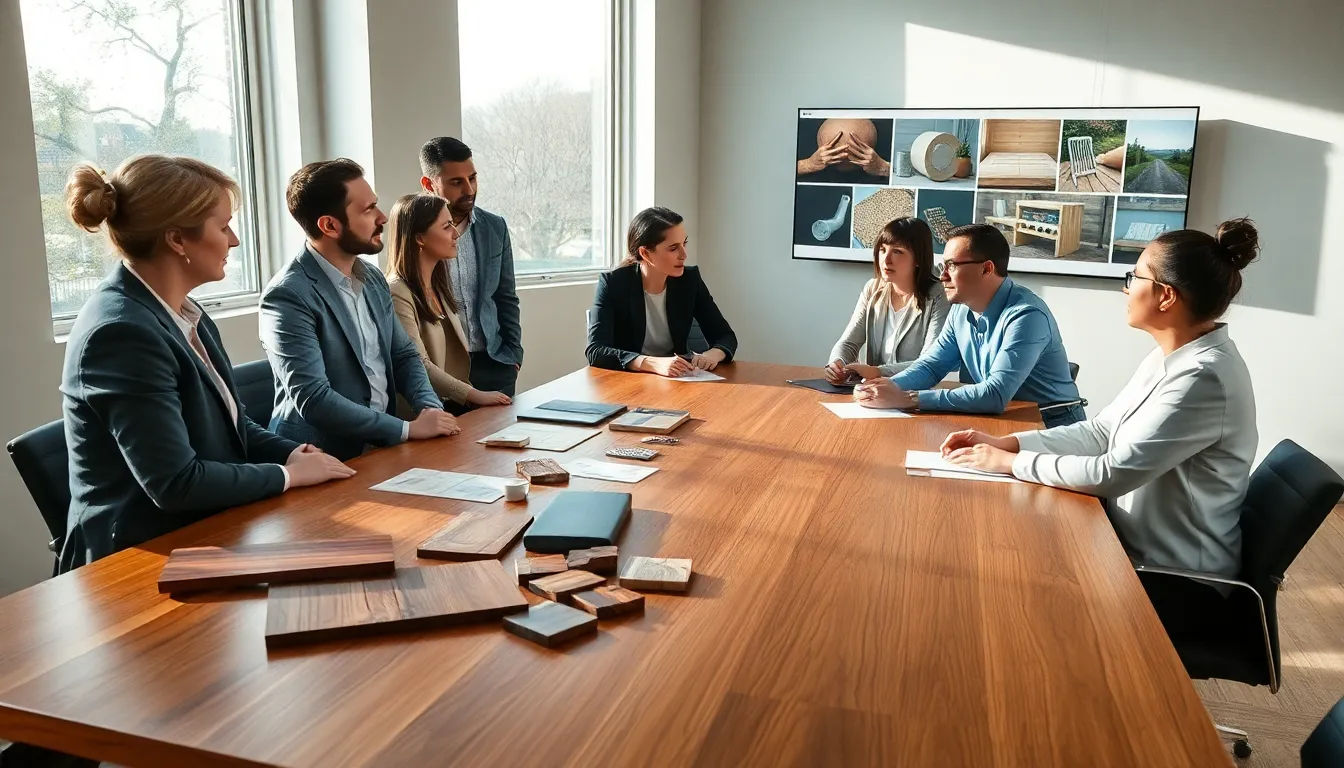Ever found yourself facing the frustrating task of restoring an old cherished item or structure, only to realize the options out there are as overwhelming as a cat in a room full of rocking chairs? Welcome to the world of restoration alternatives, where choosing the right path can feel like a high-stakes game of chess. From eco-friendly materials to cutting-edge technologies, it’s time to unravel the mystery and jump into the best restoration alternatives, because your favorites deserve a second chance.
Table of Contents
ToggleUnderstanding Restoration Alternatives

Restoration alternatives encompass various methods and materials available for rejuvenating or repairing items, structures, or ecosystems. It’s not just about bringing something back to its former glory: it’s about enhancing it where possible. The landscape of restoration has evolved significantly over the years, thanks to advancements in technology and a growing emphasis on sustainability. Whether someone is restoring an antique piece of furniture or a historical building, understanding these options can make all the difference.
The first step in considering restoration alternatives is to grasp the category they fall into. Typically, these alternatives can be divided into three main areas:
- Traditional Restoration: This involves using old-school methods and materials that mimic the original. Think of craftsmen meticulously handcrafting components just like they did in the good old days.
- Modern Restoration Techniques: Here, science meets art. Innovations like 3D printing or advanced coatings are introduced to enhance durability and aesthetics.
- Eco-Friendly Alternatives: For the environmentally conscious, this option focuses on sustainable materials and methods that minimize ecological impact. Imagine using reclaimed wood or biocomposite materials that help heal the planet while restoring beauty.
Recognizing these categories is crucial for effectively tackling any restoration project.
Benefits of Restoration Alternatives
Opting for the right restoration alternative can unlock a treasure trove of benefits. First and foremost, it can preserve the intrinsic value of an item, be it through maintaining its historical significance or enhancing its aesthetic appeal. Besides, many alternatives focus on sustainability, leading to environmental benefits. Here’s a deep jump into the key advantages:
- Cost-Effectiveness: DIY restoration might break your wallet if you aren’t careful. Often, less expensive alternatives can deliver stunning results without draining bank accounts.
- Sustainability: As people grow increasingly aware of their carbon footprints, eco-friendly restoration methods ensure that the process doesn’t harm the environment. Responsible sourcing can also enhance community ties.
- Innovation and Quality: Advances in restoration techniques often yield superior results. Enhanced materials might last longer and age beautifully, much like fine wine.
- Personalization: Individuals can tailor alternatives according to their personal tastes, effectively transforming a mundane restoration into a unique piece of art.
- Cultural Preservation: Many restoration alternatives help maintain cultural heritage, allowing future generations to appreciate the artistry and craftsmanship of earlier times.
By highlighting these benefits, anyone considering restoration alternatives can make more informed choices that cater to both personal values and project requirements.
Popular Restoration Alternatives
Like fashion trends, restoration alternatives come and go. But, some have proven themselves time and again. Here’s a look at several popular restoration alternatives that stand out:
- Reclaimed Materials: Using reclaimed wood or bricks not only adds character but also tells a story. Each piece carries the essence of its past, making it a unique choice in restorations.
- Eco-Friendly Paints and Finishes: Non-toxic paints and finishes are gaining traction due to their lower environmental impact. They provide the perfect blend of safety and aesthetics, appealing to modern sensibilities.
- Advanced 3D Printing: For those looking to replace missing parts in their restorations, 3D printing has emerged as a game-changer. This technology offers precision and customization options that were previously unimaginable.
- Thermal Restoration: Applied mainly in textile restoration, thermal restoration can repair and rejuvenate worn-out fabrics, making them look new again.
- Adaptive Reuse: A popular approach for buildings, this method repurposes existing structures for new uses while maintaining their historical character.
These alternatives not only provide practical solutions but also reflect a growing trend towards conscious and innovative restoration.
Evaluating the Right Alternative for Your Needs
Choosing the right restoration alternative can feel like navigating a maze. Each project comes with its unique set of challenges, and what works for one might not suit another. Here are some steps to guide the decision-making process:
- Define Objectives: What’s the primary goal of the restoration? Whether it’s aesthetic enhancement or structural integrity, clarify objectives first.
- Budget Considerations: Determine how much you’re willing to spend. Some alternatives may seem ecomomical at first glance but could require additional investment down the line.
- Material and Technique Compatibility: Not all materials work well together. Ensure that the chosen alternative complements the existing items or structures.
- Consult Experts: Bring in professionals familiar with restoration techniques and trends. They can offer insights that save time, resources, and potential headaches.
- DIY or Professional Help: Decide whether to tackle the restoration as a personal project or hire experts. Some alternatives may be suitable for DIY, while others call for specialized skills.
By analyzing the above criteria, he or she can select alternatives that will not only meet their immediate needs but also satisfy their long-term aspirations.
Case Studies of Successful Restorations
Real-world examples often speak louder than theory. Here are a couple of case studies that showcase successful restorations using alternative methods:
- The Historic Mill Renovation: A local community turned an abandoned mill into a cultural center. By using reclaimed materials, they preserved historical integrity while creating a modern space that serves the public. The mill stands today as a testament to blending past and present.
- Furniture Revival: An old family heirloom, once lost to the ravages of time, was restored using modern finishes and techniques. This not only saved a piece of history but also breathed new life into its aesthetic appeal. Enhanced with eco-friendly paint, it became a centerpiece in its owner’s home.
These cases exemplify how thoughtful restoration alternatives can lead to remarkable transformations, proving that with the right approach, challenges can become opportunities.
Future Trends in Restoration Alternatives
As the restoration industry continues to evolve, new trends are emerging on the horizon. Here are some future trends that are poised to reshape restoration alternatives:
- Sustainability Focus: As awareness of environmental concerns increases, restoration practices will likely prioritize sustainable materials and techniques. Expect to see a rise in biocomposites and locally sourced materials dominating the scene.
- Smart Technology Integration: Innovative technologies such as AI and IoT could be employed in restoration processes, helping assess the condition of items and automating some restoration techniques.
- Customized Solutions: As individual tastes become more pronounced, the demand for highly tailored restoration options will grow. This trend will challenge restorers to innovate continuously to meet diverse needs.
- Community Involvement: Many restoration projects will embrace community-driven approaches, incorporating local voices and expertise into plans, enriching the restoration experience further.
These trends will not only redefine how restorations are approached but also deepen the connection people have with the items and places they cherish.


